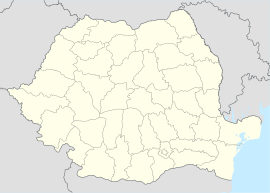
The Jiu is a river in southern Romania. It is formed near Petroșani by the confluence of headwaters Jiul de Vest and Jiul de Est.

Mehedinți County is a county of Romania on the border with Serbia and Bulgaria. It is mostly located in the historical province of Oltenia, with one municipality (Orșova) and three communes located in the Banat. The county seat is Drobeta-Turnu Severin.

Gorj County is a county of Romania, in Oltenia, with its capital city at Târgu Jiu. Gorj comes from the Slavic Gor(no)-Jiu, in contrast with Dolj.

Târgu Jiu is the capital of Gorj County in the Oltenia region of Romania. It is situated on the Southern Sub-Carpathians, on the banks of the river Jiu. Eight localities are administered by the city: Bârsești, Drăgoieni, Iezureni, Polata, Preajba Mare, Romanești, Slobozia, and Ursați.

Public roads in Romania are ranked according to importance and traffic as follows:
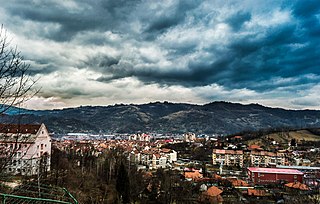
Petroșani is a city in Hunedoara County, Transylvania, Romania, with a population of 31,044 as of 2021. The city has been associated with mining since the 19th century.

Lupeni is a mining city in the Jiu Valley in Hunedoara County, Romania, in the historical region of Transylvania. It is one of the oldest and largest cities in the Jiu Valley. It is located on the banks of the Western Jiu River within the Jiu Valley, at a height varying between 630 metres (2,070 ft) and 760 metres (2,490 ft). The distance from Lupeni to Petroșani is 18 kilometres (11 mi) on the DN66A road, and to Deva it is 114 km (71 mi).

The Jiu Valley is a region in southwestern Transylvania, Romania, in Hunedoara county, situated in a valley of the Jiu River between the Retezat Mountains and the Parâng Mountains. The region was heavily industrialised and the main activity was coal mining, but due to low efficiency, most of the mines were closed down in the years following the collapse of Communism in Romania. For a long time the place was called Romania's biggest coalfield.

Strehaia is a town in Mehedinți County, Oltenia, Romania. It is situated on the Motru River valley, in the eastern part of the county. Nine villages are administered by the town: Ciochiuța, Comanda, Hurducești, Lunca Banului, Menți, Motruleni, Slătinicu Mare, Slătinicu Mic, and Stăncești.
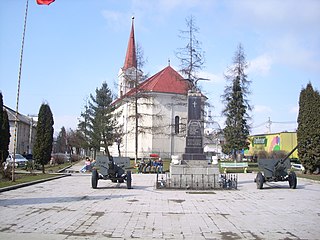
Târgu Lăpuș is a town in Maramureș County, northern Transylvania, Romania. It administers thirteen villages: Boiereni (Boérfalva), Borcut (Borkút), Cufoaia (Kohópatak), Dămăcușeni (Domokos), Dobricu Lăpușului (Láposdebrek), Dumbrava (Kisdebrecen), Fântânele, Groape (Groppa), Inău (Ünőmező), Răzoare (Macskamező), Rogoz (Rogoz), Rohia (Rohi), and Stoiceni (Sztojkafalva).

The Motru is a right tributary of the river Jiu in Southwestern Romania. It discharges into the Jiu in Gura Motrului, near the town Filiași. Its length is 134 km (83 mi) and its hydrological basin size is 1,895 km2 (732 sq mi).
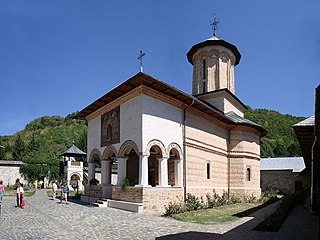
Polovragi is a commune in Gorj County, Oltenia, Romania. It is composed of two villages, Polovragi and Racovița.

Negomir is a commune in Gorj County, Oltenia, Romania. It is composed of ten villages: Artanu, Bohorel, Condeiești, Negomir, Nucetu, Orzu, Paltinu, Raci, Ursoaia, and Valea Racilor.

Scoarța is a commune in Gorj County, Oltenia, Romania. It is composed of eleven villages: Bobu, Budieni, Câmpu Mare, Cerătu de Copăcioasa, Colibași, Copăcioasa, Lazuri, Lintea, Mogoșani, Pișteștii din Deal, and Scoarța.
Văgiulești is a commune in Gorj County, Oltenia, Romania. It is composed of five villages: Cârciu, Covrigi, Murgilești, Valea Motrului, and Văgiulești.

Costești is a commune located in Vâlcea County, Oltenia, Romania. It is composed of four villages: Bistrița, Costești, Văratici, and Pietreni.
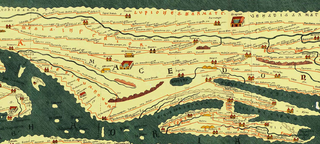
Amutria was a Dacian town close to the Danube and included in the Roman road network, after the conquest of Dacia.

Ad Mutriam was a fort in the Roman province of Dacia in the 2nd century AD.
September 1991 Mineriad was a political action and physical confrontation between the miners of the Jiu Valley and the Romanian authorities, that led to the resignation of Prime Minister Petre Roman's government. Led by Miron Cozma, president of the Jiu Valley Coal Miners Union, the miners engaged in a series of actions beginning in the 1990s referred to as "mineriads" whereby large numbers of miners traveled to the Romanian capital of Bucharest and engaged in demonstrations and sometimes violent confrontations against counter-demonstrators and government authorities.

Baia de Aramă monastery is a monastery in Baia de Aramă, Romania, located in the north-west area of Oltenia, in the Mehedinți Plateau, sheltered by a small depression, surrounded by the Dochiciu, Dealu-Mare and Cornet hills, it communicates through national roads with Târgu Jiu, Motru, Strehaia and Turnu Severin, but also with the Băile Herculane and Bala resorts.



